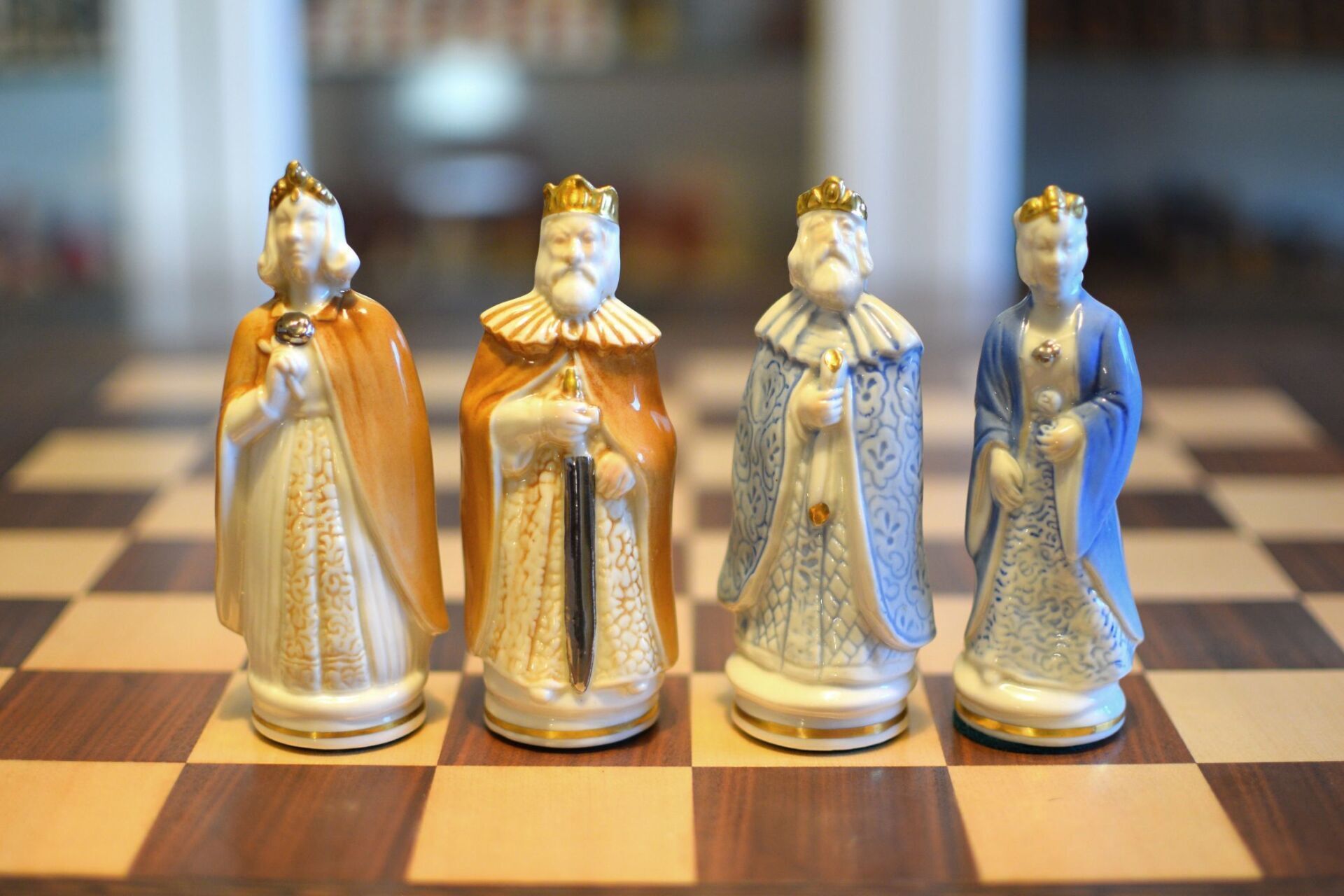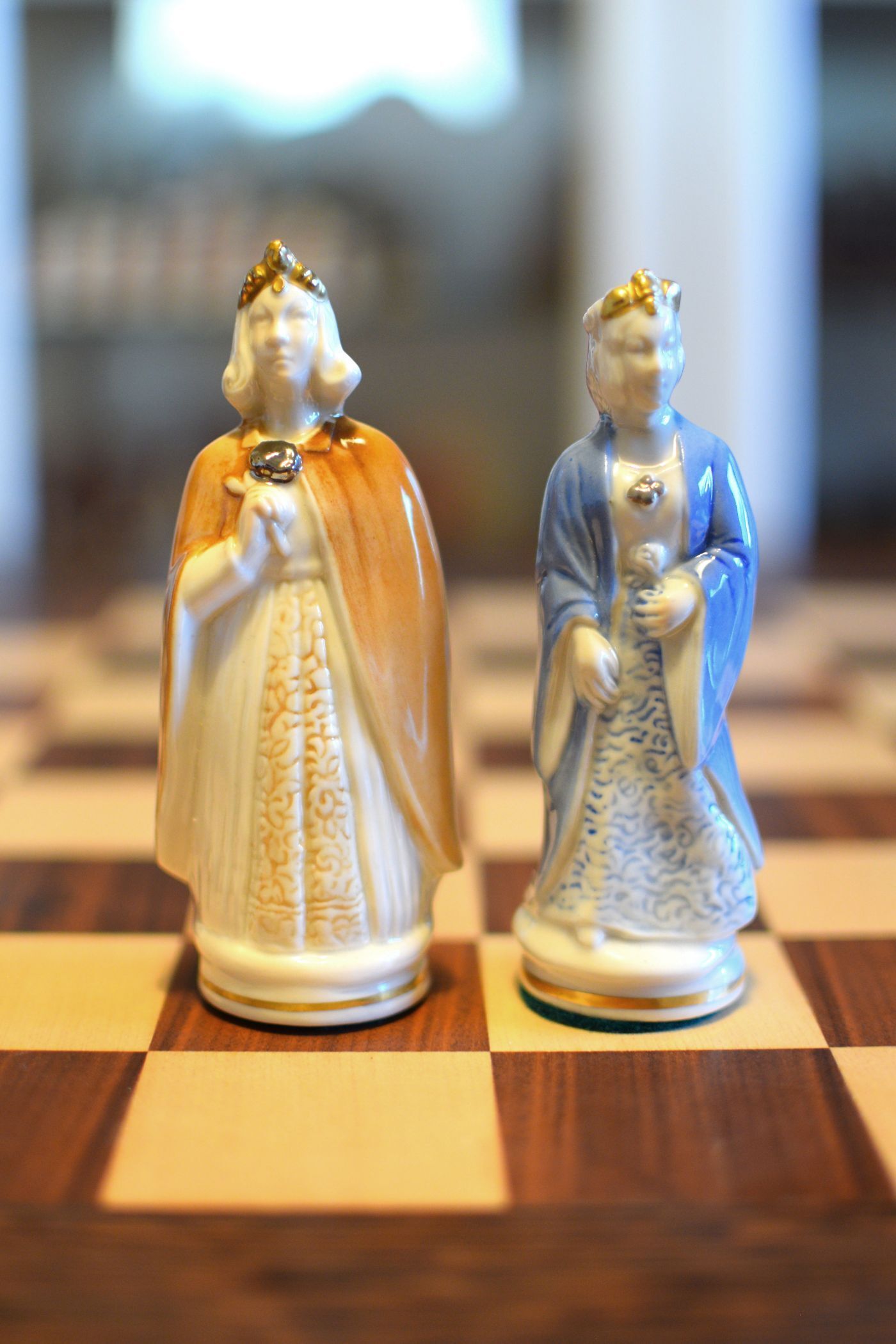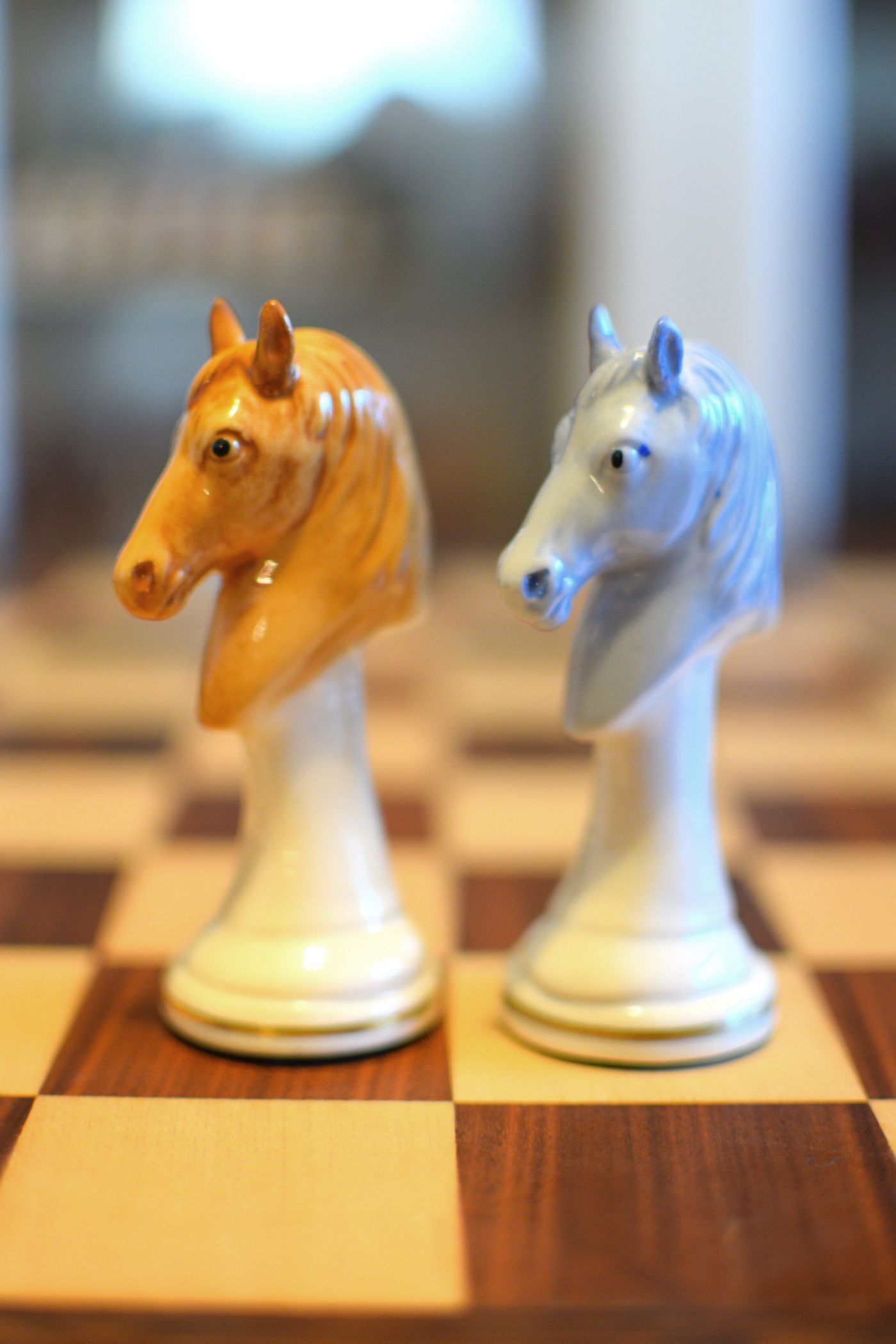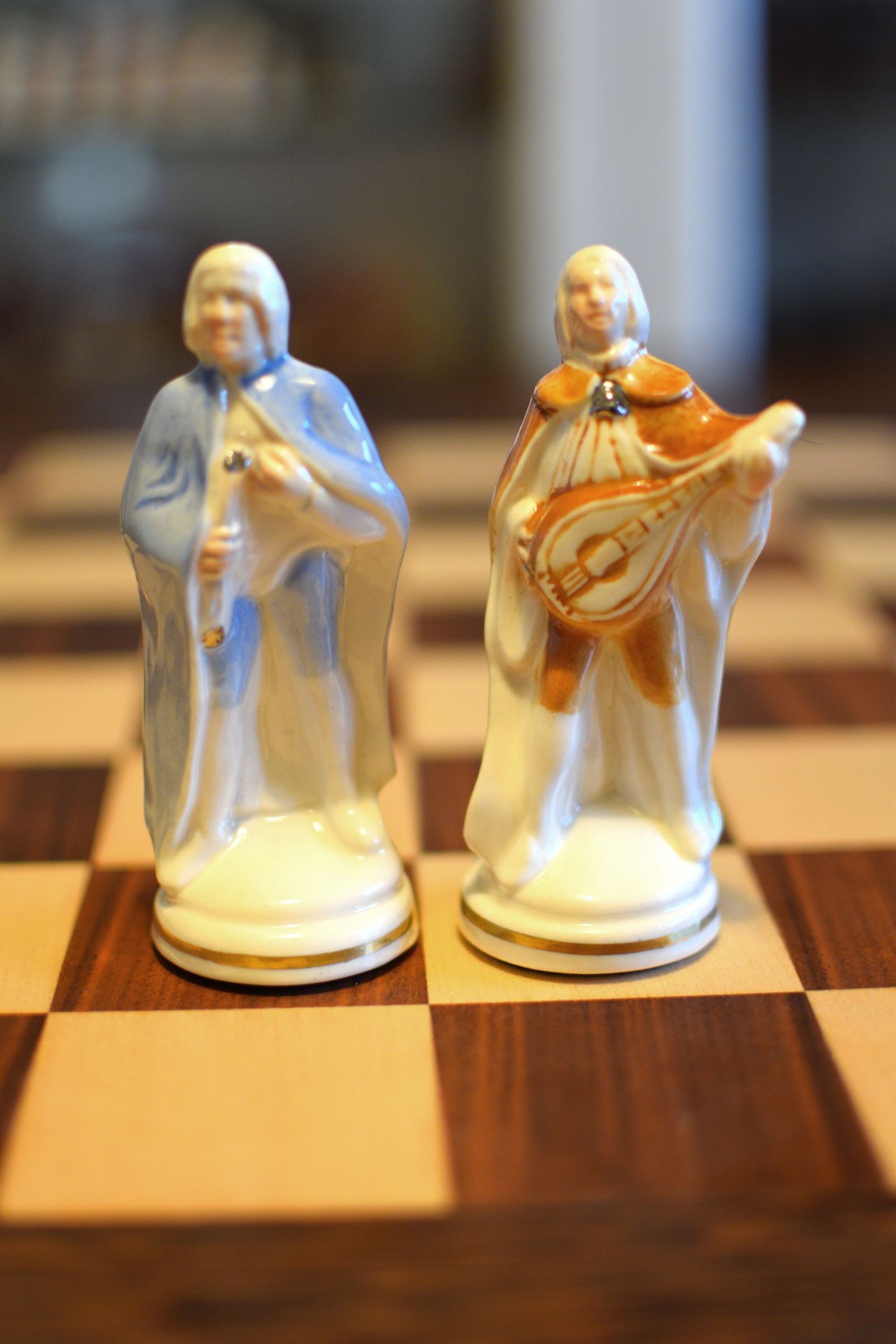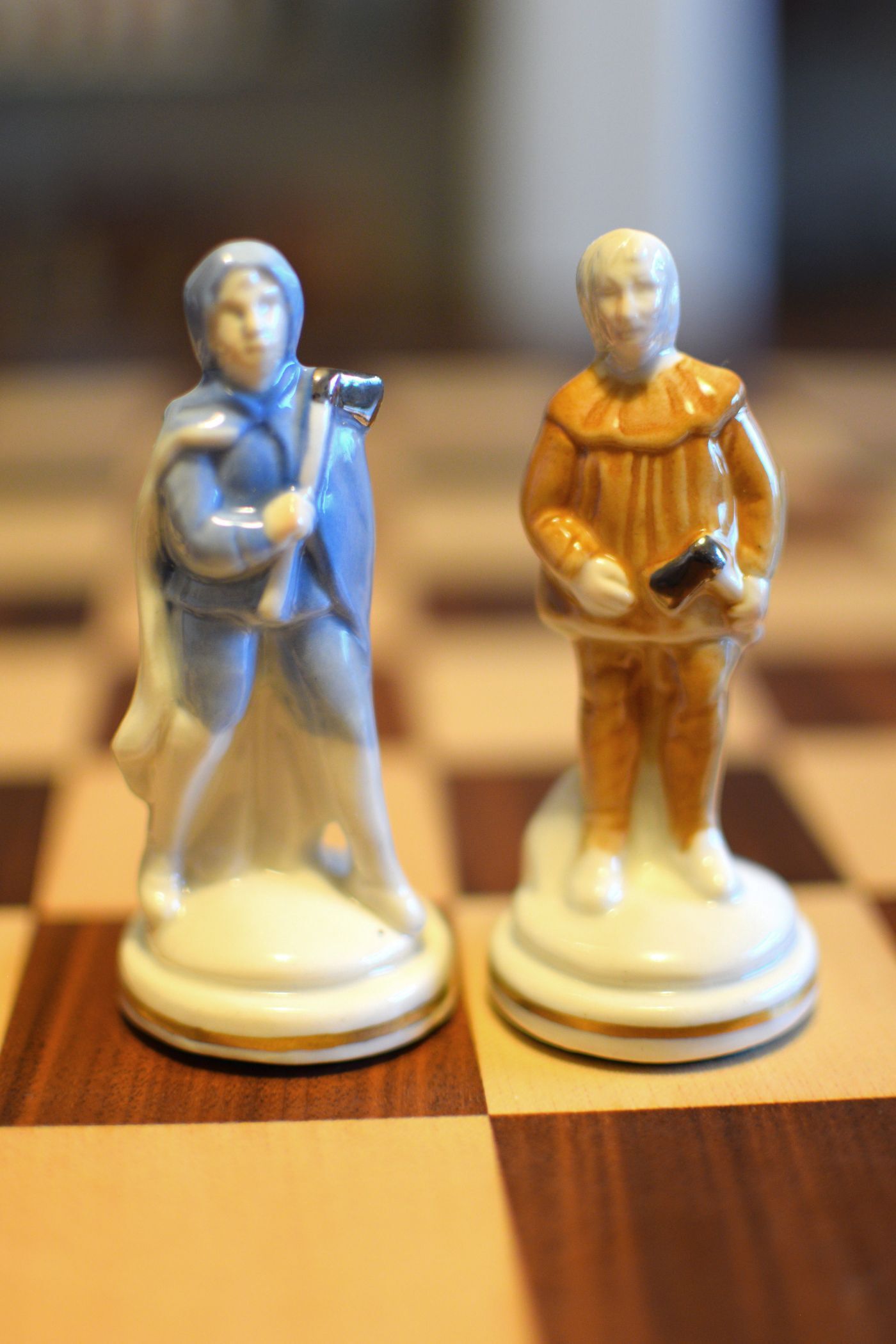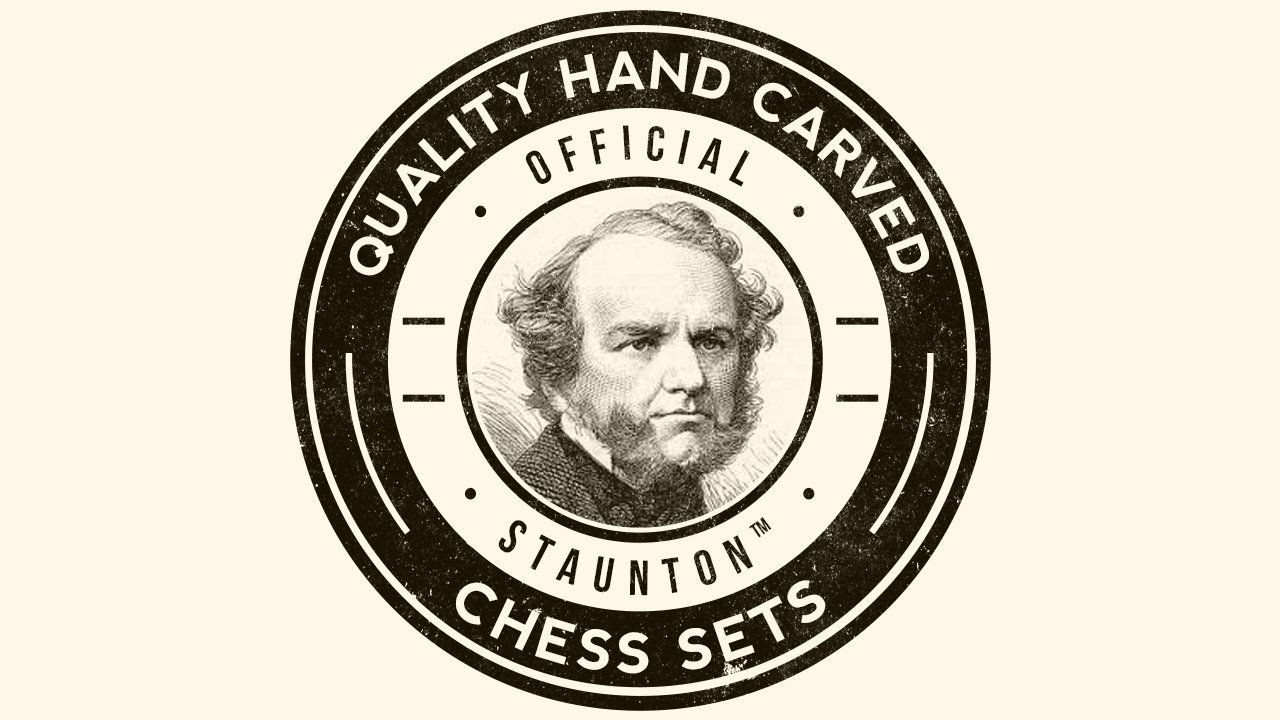German Porcelain Chess Set made by Karl Ens, First Half 20th Century
A German porcelain chess set made by Karl Ens in Rudolstadt. The two sides are shown as medieval courts, one side partly coloured in brown, the other partly coloured in blue with golden and silver details. The set came in a fitted box with artificial leather surface and two trays for the pieces fitted with blue satin. King size is 11.5 cm (4.5").
The kings are depicted as medieval rulers, the brown king with a sword, the blue one with a scroll. The queens with long robes and crown. The rooks are represented as towers, the blue rook with a tent roof, the brown rook with a kind of onion roof similar to a Welsh spire. The knights as horse heads on an elongated base. The bishops as courtiers, the brown bishop represented as a bard with a lute, the blue bishop represented as a scribe or messenger with a scroll in his hand. The pawns as simple foot soldiers, the brown pawns with a short tunic and an axe in their left hand, the blue pawns with a long cape and an axe in their right hand.
The chess set was made by the German porcelain manufacturer Karl Ens in Rudolstadt, one of the centres of German porcelain production in the 19th and 20th centuries. Karl Ens (1832-1912), the founder of the porcelain factory, was the son of Friedrich Karl Ens (1802-1865), one of the most important representatives of porcelain painting in Lauscha / Thuringia. In 1837 Friedrich Karl Ens joined the porcelain painting company Günther Greiner & Georg Wilhelm Greiner Sohn, which had been founded a decade before. Under the new name Ens & Greiner it became world-famous and won awards in Vienna, Sydney, Melbourne, Chicago and Antwerp. In the middle of the 19th century, Friedrich Karl Ens was co-owner of the porcelain factory Triebner, Ens & Eckert, which also employed his two sons Eduard, who worked as a modeller, and Karl, who followed in his father's footsteps and became a porcelain painter. In 1865 Friedrich Karl Ens died of pneumonia. In 1899 Karl Ens became self-employed and founded the porcelain factory Karl Ens in Rudolstadt, which stayed in the family for decades. Two years before his death his son Paul took over the management. From 1927 Herrmann and Eduard Ens were listed as the owners. In 1959 the company was nationalised in the German Democratic Republic and run under the name of VEB Unterglasporzellanfabrik. In 1974 it became operating part I of the VEB Sitzendorfer Porzellanmanufaktur. After reunification, the company was initially privatised, but went into insolvency shortly afterwards and was dissolved. The last two pictures (published on www.rottenplaces.de / copyright André Winternitz) show the dilapidated main building and the former entrance gate.
Dating this set is not easy, but I believe it is probably from the 1920's or 1930's, when the porcelain works of Karl Ens were designed by Arthur Storch and Berthold Boess. The reason I come to this conclusion is as follows. Chess sets by Karl Ens came in different versions. The latest versions, which were produced in the time between 1974 and 1990 carry the mark of the Sitzendorfer porcelain factory. Earlier sets carry the so called windmill mark typical of Karl Ens, which was also shown on the old entrance gate of the factory. However, most of these sets differ in the design, in particular in the shape of the rooks and have a rather strong colouring. My set, on the other hand, is not marked and has much lighter, pastel like colours, which, according to information from collectors of porcelain, were typical for Ens works prior to 1950. I am not sure to what extent porcelain artefacts of this type were produced during or right after WWII, which makes me conclude that this set was probably produced some time between 1920 and 1939.
Dating this set is not easy, but I believe it is probably from the 1920's or 1930's, when the porcelain works of Karl Ens were designed by Arthur Storch and Berthold Boess. The reason I come to this conclusion is as follows. Chess sets by Karl Ens came in different versions. The latest versions, which were produced in the time between 1974 and 1990 carry the mark of the Sitzendorfer porcelain factory. Earlier sets carry the so called windmill mark typical of Karl Ens, which was also shown on the old entrance gate of the factory. However, most of these sets differ in the design, in particular in the shape of the rooks and have a rather strong colouring. My set, on the other hand, is not marked and has much lighter, pastel like colours, which, according to information from collectors of porcelain, were typical for Ens works prior to 1950. I am not sure to what extent porcelain artefacts of this type were produced during or right after WWII, which makes me conclude that this set was probably produced some time between 1920 and 1939.







